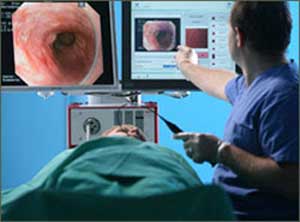- Home
- Editorial
- News
- Practice Guidelines
- Anesthesiology Guidelines
- Cancer Guidelines
- Cardiac Sciences Guidelines
- Critical Care Guidelines
- Dentistry Guidelines
- Dermatology Guidelines
- Diabetes and Endo Guidelines
- Diagnostics Guidelines
- ENT Guidelines
- Featured Practice Guidelines
- Gastroenterology Guidelines
- Geriatrics Guidelines
- Medicine Guidelines
- Nephrology Guidelines
- Neurosciences Guidelines
- Obs and Gynae Guidelines
- Ophthalmology Guidelines
- Orthopaedics Guidelines
- Paediatrics Guidelines
- Psychiatry Guidelines
- Pulmonology Guidelines
- Radiology Guidelines
- Surgery Guidelines
- Urology Guidelines
Simplifying Endoscopic Ultrasound-Guided Biliary Drainage: The Way Forward?

EUS-guided choledochoduodenostomy(EUS-CD) using a lumen-apposing metal stent (LAMS) has been recently reported as an alternative treatment approach for patients with malignant obstructive jaundice and failed endoscopic retrograde cholangiopancreatography (ERCP) in the journal Gastrointestinal Endoscopy.
Anderloni A and associates analyzed the safety, technical and clinical efficacy of EUS-CD using LAMS in patients with malignant obstructive jaundice.
A retrospective study of consecutive patients with inoperable malignant distal bile duct obstruction who underwent EUS-CD using an electrocautery enhanced(EC)- LAMS over a 3-year (2015-2018) period. Forty-six patients (47.8 % females; median age 73.1 ± 12.6) underwent direct EUS-CD using the biliary EC-LAMS.
The main outcome measures were: technical and clinical success (defined as a decline in serum bilirubin by 50% at 2-week follow-up). Secondary outcomes were: occurrence of adverse events, procedure time, and stent patency.
Read Also: GI endoscopy in patients on direct oral anticoagulants is risky : BMJ
Key study findings:
- The procedure was technically successful in 43 patients (93.5%).
- The rate of clinical success was 97.7%.
- Adverse events occurred in 5 (11.6%) patients and included the following: 1 fatal bleeding 17 days after stent placement, 3 episodes of stent occlusion (food impaction), and 1 spontaneous migration (all 4 requiring reintervention). The mean follow-up was 114.37 days.
The study concluded that EUS-CD using the EC-LAMS is effective but the rate of adverse events including one fatal event is not negligible and should be carefully considered before using the stent in this clinical setting.
This study suggests that perhaps the simplest approach to EUS-guided biliary drainage may be the best. The single-step option is easy to learn and simple to perform and obviates many steps used in traditional EUS-guided biliary drainage procedures. While this approach may not work in all patients, it is likely to be worth considering in the majority of patients with pancreatic cancer in whom ERCP is not possible owing to duodenal obstruction (the most common clinical situation where EUS-guided biliary drainage is used). As the results show, biliary drainage involves relatively high-risk procedures, but simplifying the approach will go a long way toward risk reduction.
According to the authors, prospective studies are required to validate the preliminary findings to fully assess the long-term efficacy and safety of the stent.
For reference log on to https://doi.org/10.1016/j.gie.2018.08.047

Disclaimer: This site is primarily intended for healthcare professionals. Any content/information on this website does not replace the advice of medical and/or health professionals and should not be construed as medical/diagnostic advice/endorsement or prescription. Use of this site is subject to our terms of use, privacy policy, advertisement policy. © 2020 Minerva Medical Treatment Pvt Ltd